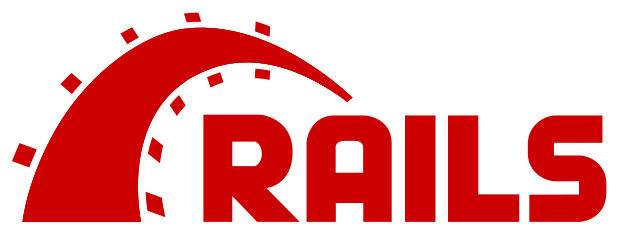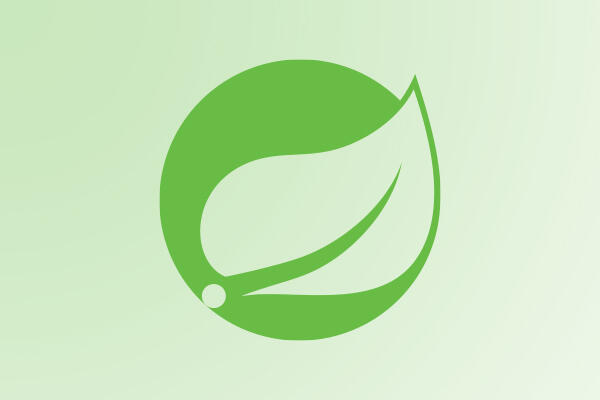Web frameworks are essential tools for developers to create dynamic and interactive websites and web applications. These frameworks provide a set of pre-built libraries and functions that make it easier for developers to build and deploy web applications quickly and efficiently. In this article, we will discuss the top web frameworks to learn in 2023 and provide an overview of their advantages and disadvantages.
The list of top web frameworks to learn in 2023
Django
Django is a high-level Python web framework that encourages rapid development and clean, pragmatic design. It is designed to take care of much of the hassle of web development, so you can focus on writing your app without needing to reinvent the wheel. Django includes a variety of features such as a built-in ORM (Object-Relational Mapper) for interacting with databases, an automatic admin interface, and support for internationalization.
Advantages:
- Django has a large and active community, which means that there is a wealth of documentation, tutorials, and support available online.
- It has a robust security system, with features such as cross-site request forgery protection and SQL injection protection built-in.
- Django’s ORM makes it easy to interact with databases and perform common database operations without the need to write raw SQL.
Disadvantages:
- Django can be quite opinionated and may not be the best choice for projects that require a lot of customization.
- It can be a bit overwhelming for beginners, as there is a lot of functionality built into the framework and it may take some time to learn all the ins and outs.
Ruby on Rails
Ruby on Rails, or simply Rails, is a popular web application framework written in the Ruby programming language. It is designed to make programming web applications easier by making assumptions about what developers need and providing them with a structure to build their applications. Rails use the MVC (Model-View-Controller) architectural pattern and include features such as convention over configuration, which means that developers do not have to specify as much configuration as they would with other frameworks.
Advantages:
- Rails have a strong emphasis on convention over configuration, which means that developers do not have to spend as much time setting up and configuring their projects.
- It has a large and active community, which means that there is a wealth of documentation, tutorials, and support available online.
- Rails have a number of built-in features such as database migrations and support for AJAX that make it easier for developers to build interactive and dynamic web applications.
Disadvantages:
- Rails can be a bit opinionated, which may not be suitable for projects that require a lot of customization.
- It can be a bit slower than other frameworks due to the overhead of the Ruby language.
Laravel
Laravel is a PHP web application framework that is designed to make it easier for developers to build modern, expressive web applications. It includes a variety of features such as a built-in ORM, a task scheduler, and support for real-time communication that make it easier for developers to build interactive and dynamic web applications.
Advantages:
- Laravel has a large and active community, which means that there is a wealth of documentation, tutorials, and support available online.
- It has a number of built-in features such as a task scheduler and support for real-time communication that make it easier for developers to build interactive and dynamic web applications.
- Laravel’s ORM makes it easy to interact with databases and perform common database operations without the need to write raw SQL.
Disadvantages:
- Laravel can be a bit opinionated, which may not be suitable for projects that require a lot of customization.
- It can be a bit overwhelming for beginners, as there is a lot of functionality built into the framework and it may take some time to learn all the ins and outs.
Flask
Flask is a microweb framework written in Python that is designed to be lightweight and extensible. It is a good choice for developers who want to build simple web applications quickly and easily. Flask includes a number of features such as support for templates and a built-in development server that make it easier for developers to build and deploy web applications.
Advantages:
- Flask is lightweight and easy to learn, making it a good choice for beginners or developers who want to build simple web applications quickly.
- It is highly extensible, which means that developers can easily add new functionality to their applications by installing additional libraries and packages.
- Flask has a small and active community, which means that there is a wealth of documentation, tutorials, and support available online.
Disadvantages:
- Flask is not as feature-rich as some of the other frameworks on this list, which means that it may not be suitable for larger or more complex projects.
- It does not include a built-in ORM, which means that developers will need to write raw SQL or use an external library to interact with databases.
Spring
Spring is a Java-based web application framework that is designed to make it easier for developers to build enterprise-grade web applications. It includes a number of features such as a built-in ORM, support for MVC, and support for real-time communication that make it easier for developers to build interactive and dynamic web applications.
Advantages:
- Spring has a large and active community, which means that there is a wealth of documentation, tutorials, and support available online.
- It has a number of built-in features such as a built-in ORM and support for real-time communication that make it easier for developers to build interactive and dynamic web applications.
- Spring is designed for enterprise-grade applications, which means that it has a number of features and capabilities that are suitable for large and complex projects.
Disadvantages:
- Spring can be a bit complex and may be overwhelming for beginners or developers who are new to the Java programming language.
- It can be a bit slower than other frameworks due to the overhead of the Java language.
ASP.NET Core
ASP.NET Core is a cross-platform, open-source web application framework developed by Microsoft. It is a reimplementation of ASP.NET that is designed to be lightweight, modular, and fast. ASP.NET Core includes a number of features such as support for MVC, a built-in dependency injection container, and support for web sockets that make it easier for developers to build interactive and dynamic web applications.
Advantages:
- ASP.NET Core is cross-platform, which means that it can be used to build web applications that can run on Windows, Linux, and macOS.
- It is open-source and actively developed by a community of contributors, which means that there is a wealth of documentation, tutorials, and support available online.
- ASP.NET Core has a number of built-in features such as support for MVC and web sockets that make it easier for developers to build interactive and dynamic web applications.
- It is designed to be lightweight and fast, which makes it well-suited for building high-performance web applications.
Disadvantages:
- ASP.NET Core is a relatively new framework and may not have as many libraries and packages available as some of the more established frameworks.
- It may require a bit of a learning curve for developers who are familiar with the older version of ASP.NET.
Overall, ASP.NET Core is a powerful and feature-rich web application framework that is well-suited for building modern, interactive web applications. Its cross-platform nature and open-source status make it an attractive choice for many developers, and its built-in features and capabilities make it well-suited for a wide range of web development projects.
React
React is a JavaScript library for building user interfaces that was developed by Facebook. It is designed to make it easy for developers to build interactive and dynamic user interfaces for web applications. React is often used in combination with other tools and libraries such as Redux and Webpack to build modern, single-page web applications.
Advantages:
- React has a large and active community, which means that there is a wealth of documentation, tutorials, and support available online.
- It is designed to be fast and efficient, with a virtual DOM (Document Object Model) that helps to minimize the number of DOM manipulations required to update the user interface.
- React is flexible and can be used to build a wide variety of user interfaces, from simple components to complex, interactive applications.
Disadvantages:
- React is just a library for building user interfaces, which means that developers will need to use additional tools and libraries to build a complete web application.
- It can be a bit overwhelming for beginners, as there is a lot of functionality built into the library and it may take some time to learn all the ins and outs.
Angular
Angular is a comprehensive JavaScript framework for building single-page web applications. It was developed by Google and includes a number of features such as support for MVC, a built-in dependency injection container, and support for reactive programming that make it easier for developers to build interactive and dynamic web applications.
Advantages:
- Angular has a large and active community, which means that there is a wealth of documentation, tutorials, and support available online.
- It includes a number of built-in features such as support for MVC and a built-in dependency injection container that make it easier for developers to build interactive and dynamic web applications.
- Angular is designed to be scalable and maintainable, with a set of best practices and conventions that help developers to build large, complex applications.
Disadvantages:
- Angular can be a bit complex and may require a bit of a learning curve for developers who are new to the framework.
- It can be a bit opinionated, which may not be suitable for projects that require a lot of customization.
Overall, Angular is a powerful and feature-rich JavaScript framework that is well-suited for building modern, interactive single-page web applications. Its built-in features and capabilities make it easy for developers to build complex and dynamic user interfaces, and its scalability and maintainability make it well-suited for large and complex projects.
Vue.js
Vue.js is a progressive JavaScript framework for building user interfaces that is designed to be lightweight and easy to learn. It is similar to React in that it is a library for building user interfaces, but it is designed to be more approachable and easier to learn for developers who are new to the world of JavaScript frameworks. Vue.js includes a number of features such as a template syntax, a reactive component model, and a virtual DOM that make it easier for developers to build interactive and dynamic user interfaces.
Advantages:
- Vue.js is lightweight and easy to learn, which makes it a good choice for developers who are new to JavaScript frameworks or who are building simple applications.
- It has a reactive component model and a virtual DOM that help to make it efficient and fast, with minimal DOM manipulations required to update the user interface.
- Vue.js has a large and active community, which means that there is a wealth of documentation, tutorials, and support available online.
Disadvantages:
- Vue.js is just a library for building user interfaces, which means that developers will need to use additional tools and libraries to build a complete web application.
- It may not have as many features and capabilities as some of the more comprehensive JavaScript frameworks, which may not be suitable for larger or more complex projects.
Overall, Vue.js is a lightweight and approachable JavaScript framework that is well-suited for building simple, interactive user interfaces. Its ease of use and active community make it a good choice for developers who are new to the world of JavaScript frameworks, and its reactive component model and virtual DOM make it fast and efficient.
Express
Express is a minimal and flexible Node.js web application framework that is designed to make it easy for developers to build web applications and APIs. It is a good choice for developers who want to build lightweight web applications quickly and easily. Express includes a number of features such as middleware support and routing that make it easier for developers to build and deploy web applications.
Advantages:
- Express is lightweight and easy to learn, which makes it a good choice for developers who want to build simple web applications quickly.
- It has a large and active community, which means that there is a wealth of documentation, tutorials, and support available online.
- Express is highly extensible, which means that developers can easily add new functionality to their applications by installing additional middleware and packages.
Disadvantages:
- Express is not as feature-rich as some of the other frameworks on this list, which means that it may not be suitable for larger or more complex projects.
- It does not include a built-in ORM, which means that developers will need to write raw SQL or use an external library to interact with databases.
Overall, Express is a lightweight and flexible web application framework that is well-suited for building simple web applications and APIs. Its ease of use and extensibility make it a good choice for developers who want to build lightweight applications quickly, and its active community means that there is a wealth of documentation and support available online.
Conclusion
In conclusion, there are a number of web frameworks and libraries available for developers to choose from when it comes to building web applications. Each framework has its own set of advantages and disadvantages, and the best choice will depend on the specific needs and requirements of the project. By considering the strengths and weaknesses of each framework, developers can choose the best tool for the job and build high-quality, interactive, and dynamic web applications.
As for the top three frameworks used by tech companies, it is worth noting that the popularity of web frameworks can vary over time and can be influenced by a variety of factors such as the specific needs and requirements of a project, the preferences of the development team, and the technologies that a company uses. However, some of the most popular web frameworks among tech companies include:
- React: React is a popular JavaScript library for building user interfaces that are often used by tech companies to build interactive and dynamic web applications.
- Angular: Angular is a comprehensive JavaScript framework that is often used by tech companies to build single-page web applications.
- Node.js: Node.js is a popular JavaScript runtime that is often used by tech companies to build server-side applications and APIs.
It is worth noting that these are just a few examples, and the popularity of web frameworks can vary depending on the specific needs and requirements of a project and the preferences of the development team. Ultimately, the best choice of web framework will depend on the specific needs and requirements of the project, and developers should consider the strengths and weaknesses of each framework when choosing the best tool for the job.
I hope you find this post on top web frameworks to learn in 2023 helpful. Cheers!!!
[Further Readings: Top 7 Web Frameworks to Learn and Focus on in 2021 | Top 7 Programming Languages to Focus on in 2021 | Structural Design Patterns | Bridge Design Pattern in C# | Decorator Design Pattern in C# | Flyweight Design Pattern in C# | Composite Design Pattern in C# | Facade Design Pattern in C# | Proxy Design Pattern in C# | SQLite Studio to manage SQLite databases | Adapter Design Pattern in C# | How to use Blazor EditForm for Model Validation | How to add a new profile in Windows Terminal | How to easily Customize Global Settings in Windows Terminal ]









